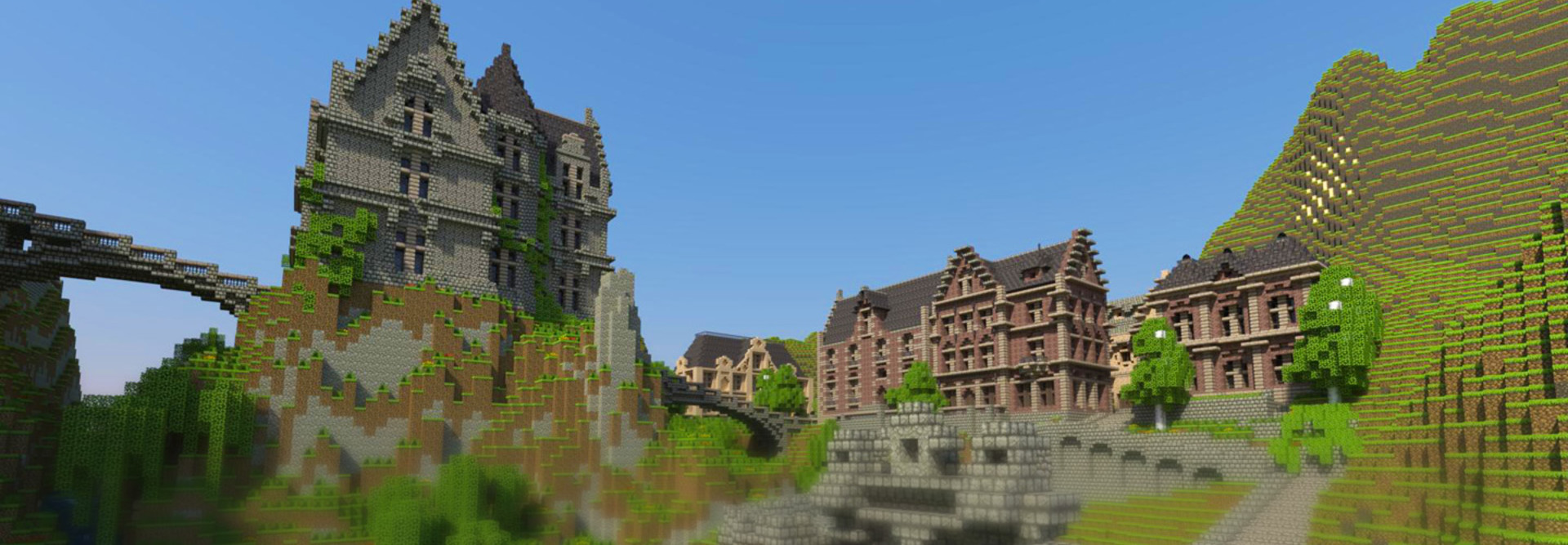Video Games Are Playing a Pivotal Role in the Classroom
In the ’80s and ’90s, students playing Oregon Trail worried about their characters dying of dysentery. Today, students worry about managing their resources in Minecraft.
Digital game-based learning has come a long way, and many educators believe it is still an effective approach in teaching.
Game-based learning is the educational strategy of taking something that many students know and love — video games — and translating it into a classroom activity. As more teachers adopt this strategy, students are getting the chance to play games of all types in the classroom, and the result is an informative lesson taught through a medium that students of all ages can connect with.
What to Play?
There were over 548 unique video games released in 2013 alone, and many are not appropriate for a school setting, so finding titles that are suitable for educational use can be a bit of a headache. To make things easier, here are three video games that have proved successful in the classroom, along with their educational takeaway:
- Minecraft (Rated E10+)*
What it teaches: Digital Citizenship
According to one of the game’s developers, Minecraft has sold 54 million copies, so it should be familiar to most students. Minecraft is an open-world, block-based adventure game, where players can explore, build, craft and fight monsters. Edutopia published a video that explores how this title can be used to teach digital citizenship, which includes Internet ethics and online safety and privacy.
An in-game example of digital citizenship involves the concept of survival. Resources are important in Minecraft. Players need food to survive the wild, and materials to create tools and structures. One strategy for teaching digital citizenship with Minecraft is to help students understand that they need to ask permission before taking someone’s materials or cooperate to produce the materials in the first place. The metaphor not only teaches the importance of cooperation but also can be used to educate students on the perils of plagiarizing.
Andrew Miller, an educational consultant for Edutopia, listed several other strategies for using Minecraft in education. One of his ideas allows students to explore locations, which they otherwise wouldn’t be able to experience, through Minecraft (you can freely download maps that somebody else took the time to build). For example, students have the ability to take a virtual, pixilated tour of Shakespeare’s Globe Theatre or the ancient Roman Coliseum.
- Portal and Portal 2 (Rated T and E10+, respectively)*
What it teaches: Teamwork and Physics
Portal is a puzzle-solving game developed by Valve. The game places players in futuristic rooms with anti-gravity machines, lasers, robots and an assortment of other obstacles. The objective is to find the door and open it, but it isn’t as easy as you’d think. Your only tool is a portal gun, a device that allows you to open two separate portals and walk through them, magically transporting you through one portal and out the other.
The game is definitely tricky, so it requires teamwork and cooperation between students to solve each of the puzzles. For instance, players may have to figure out how to free teammates who are trapped in a room with no obvious escape.
The website TeachWithPortals.com outlines unique methods to teach concepts like teamwork and physics using this popular video game.
- DragonBox (No ESRB rating)*
What it teaches: Algebra
DragonBox is an app available through iTunes and Google Play that aims to teach algebra to young students quickly and easily.
“On average, it took 41 minutes and 44 seconds for students to master algebra skills during the Washington State Algebra Challenge using the DragonBox App,” says Forbes contributor Jordan Shapiro, referring to a challenge the required students in Washington school districts to solve 250,000 equations in a single week in June of 2013. “Together, [4,192 K–12 students] solved 390,935 equations over the course of 5 days.”
The app starts small and focuses on the visual aspects of learning. For younger students, the app displays pictures instead of numbers and letters, and the variables are uniquely established so students can quickly learn key concepts. Of the aforementioned students, those who played longer than 1.5 hours reached 92.9 percent mastery of the subject.
“If DragonBox could make algebra exciting,” Shapiro says, “what else could we expect from interactive learning?”
Video games teach critical thinking, problem solving skills, and perseverance while building metacognitive skills, Shapiro says, and they can provide “systematic, data driven teaching in a way that forces creative problem solving rather than rote memorization.”
The video games mentioned in this article are only a fraction of the titles adaptable to a classroom setting. Other games that may have potential for success in the classroom include Armadillo Run, Hearthstone: Heroes of Warcraft, GarageBand, EVE Online, Processing and Arduino.
Educators are always searching for new ways to interest students and draw their attention to topics that might be considered uninteresting. Game-based learning has proved to be an unexpected but successful ally in that struggle.
*A guide to understanding the ESRB rating system for video games can be found here.









